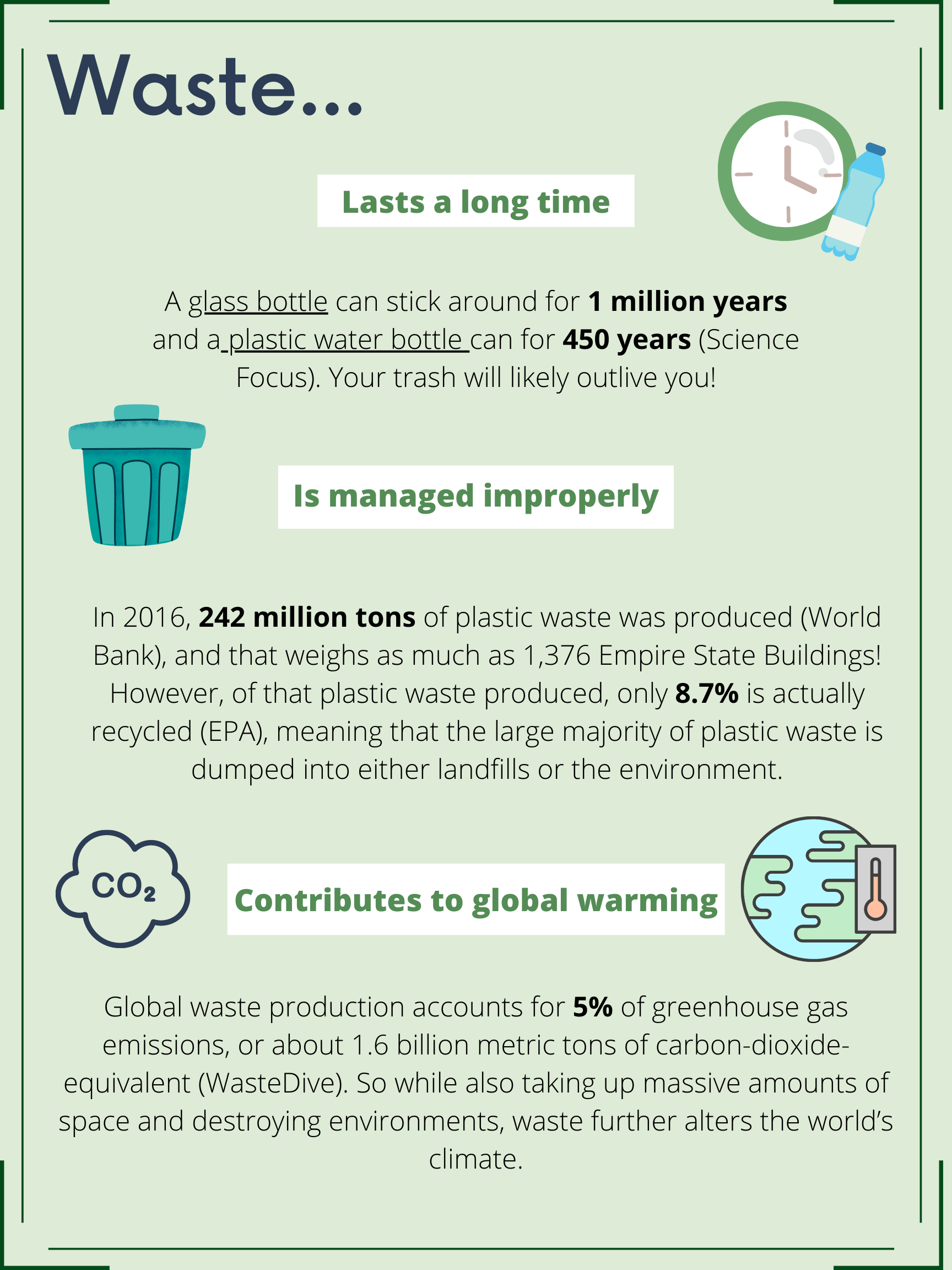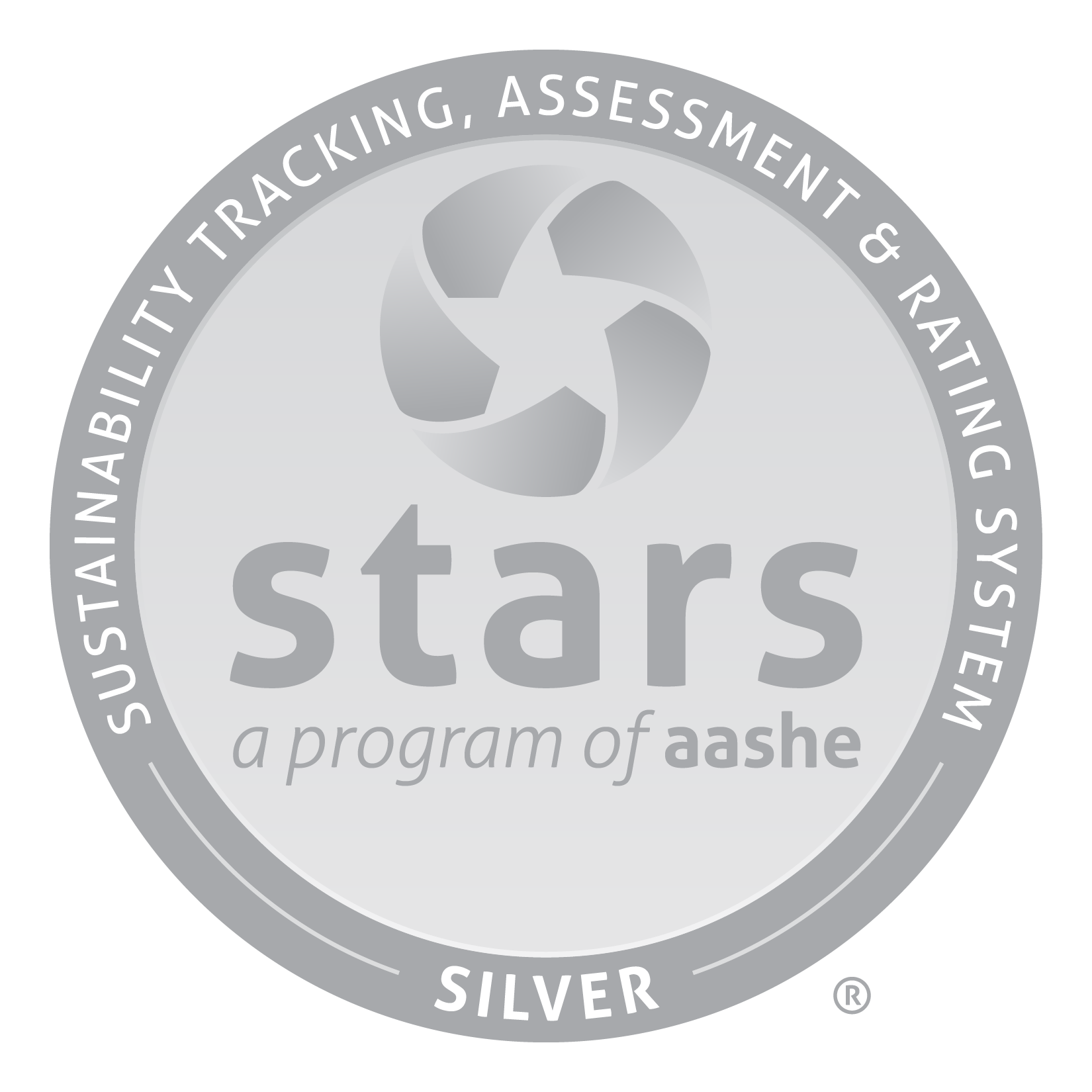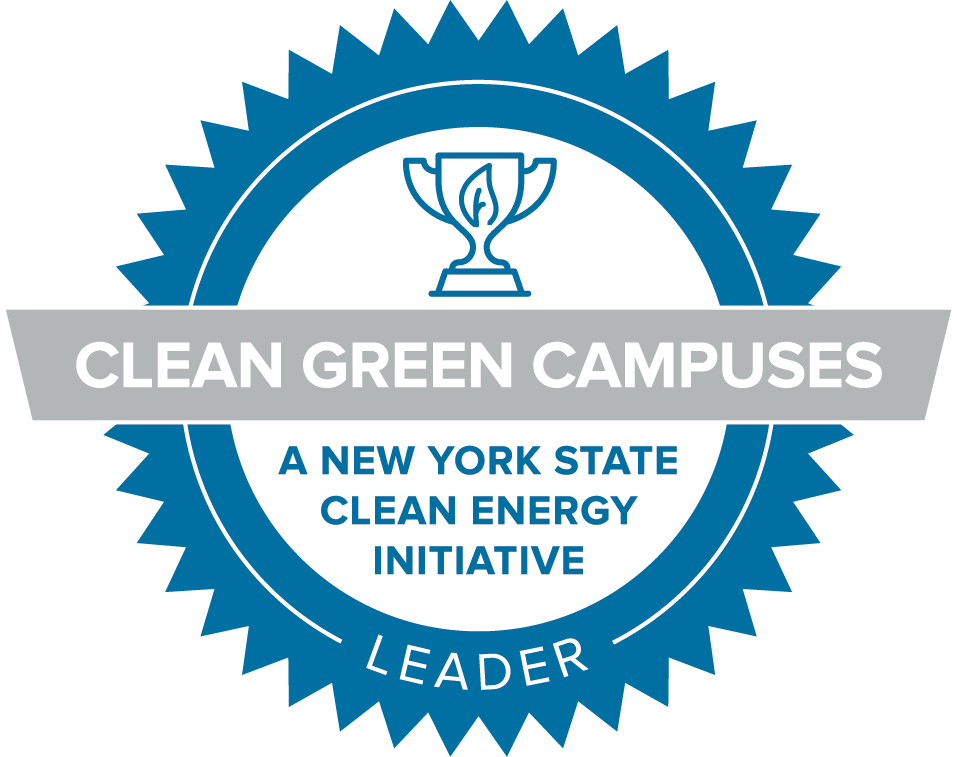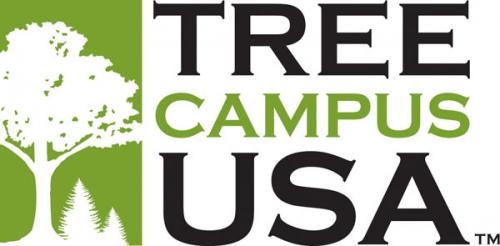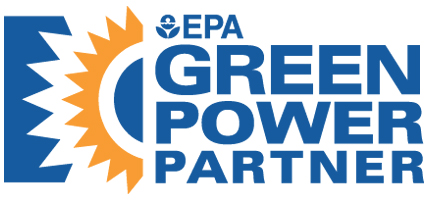Waste
The United Nations’ Sustainable Development Goal on Responsible Consumption and Production outlines the issues involved with the global production and consumption systems, and also addresses the need for the reduction and proper management of global waste. A specific target for this goal is to “achieve the environmentally sound management of chemicals and all wastes throughout their life cycle” (UN SDGs). At Skidmore, our overall waste goal is to divert 60% of our waste to recycling and compost by 2025, so we only send 40% of our material to the landfill. “Dive Deep” into the issue of waste and its impacts and learn how to properly manage your waste!
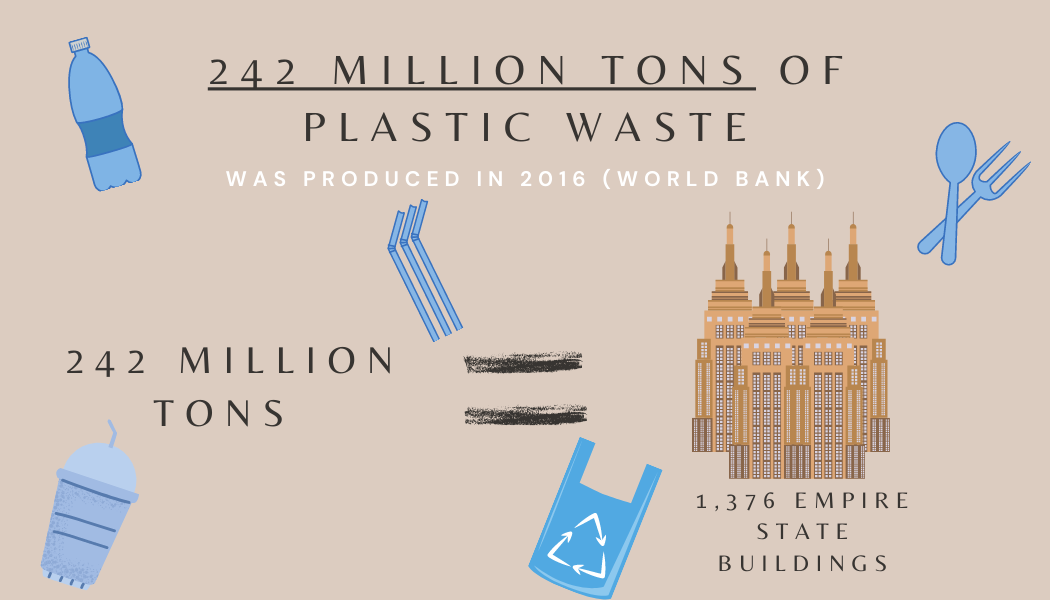
Waste is also an environmental justice issue, because landfills and other waste facilities tend to be placed in low income and minority communities. This is because these communities are seen as being “the path of least resistance”, with fewer resources and less political power than wealthy white neighborhoods or suburbs. BIPOC and low income communities are then exposed to the hazardous chemicals and pollutants from these landfills and hazardous waste sites, leading to increased rates of chronic health conditions (American Progress). This is yet another example of how BIPOC and low income communities have been systematically targeted and oppressed.
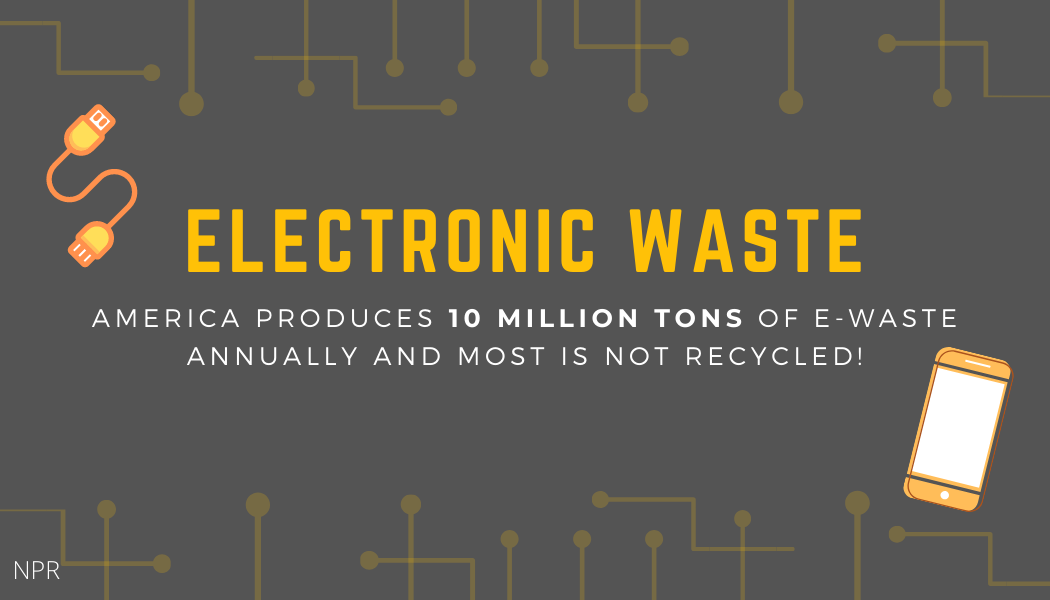
Moving forward, it is important to remember that the waste you produce has to go somewhere:
a landfill in someone’s backyard or across the world in a developing country. If you
can’t reduce the amount of waste you are producing, do your best to properly manage
it and divert your waste from landfills! Sorting landfill-bound items and recycling
is straightforward. Here are two key tips: First, know what your waste hauler accepts,
because haulers set rules and regulations on what items they can recycle and it can
vary county-by-county and state-by-state. For example, you may not be able to recycle
plastics #3-7 at home, but we can indeed recycle those plastics at Skidmore. Second,
all recyclables should be dry and clean. Make sure bottled drinks are empty, and give
containers with food waste a rinse. If food waste or liquids are mixed into the recycling,
it is considered contaminated and will be landfilled. In addition, cleaning out your
containers will decrease smells around your recycling bin.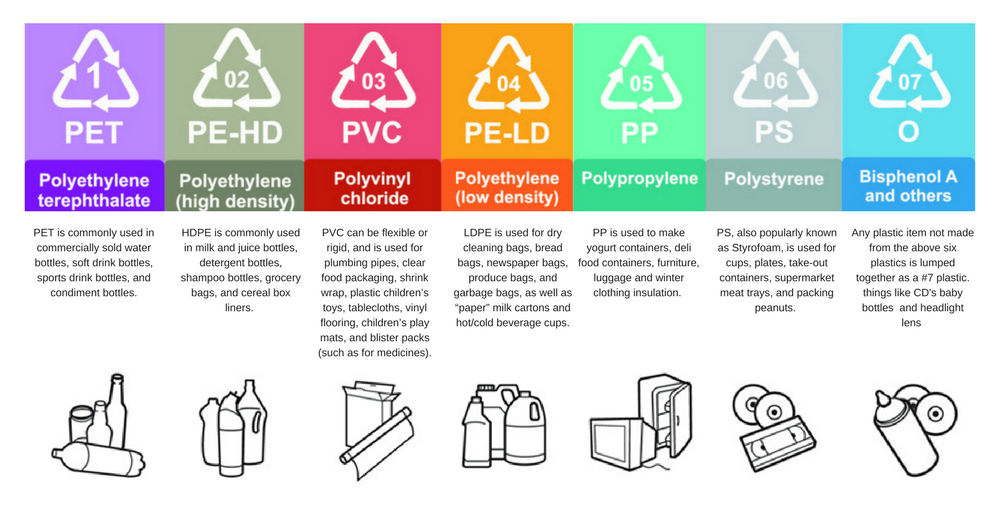
Diversion of food waste: Since 2011, the Skidmore compost program in the apartments has diverted over 100,000 pounds of food waste from the landfill.
Diversion of special wastes: Electronics (printers, cables, computers, etc) can be recycled by visiting campus safety to request access to the Electronics Recycling area in the Wait Basement. Contact the Sustainability Office to inquire about the date for the annual electronics recycling collection. Batteries (except alkaline) can be recycled at the Post Office in Case Center.
General Tips
- Be considerate of your hallmates and housekeepers!
- Break down your cardboard boxes
- Do not leave your trash on the floor or outside of the dumpsters
- Do not dump liquids in either the recycling or landfill bins
- Don’t be lazy! Sometimes it might seem like an extra step to thoughtfully manage your waste, but it's super important that we all do our part, as this is the world that we live in and we need to treat it with respect!
Tips for Living In Dorms
- Different dorm buildings have different waste receptacles and by knowing your dorms methods, it will be easier to manage your waste! All dorms have zero-sort recycling and landfill bins.
- South Quad dorms (Wilmarth, Wiecking, Kimball, McClellan, and Penfield) have a centrally located waste station in the kitchen of each floor along with a separate closet for cardboard recycling.
- North Quad dorms (Howe, Rounds, Wait, and JoTo) have communal waste stations and additional trash closets located in some of the suites.
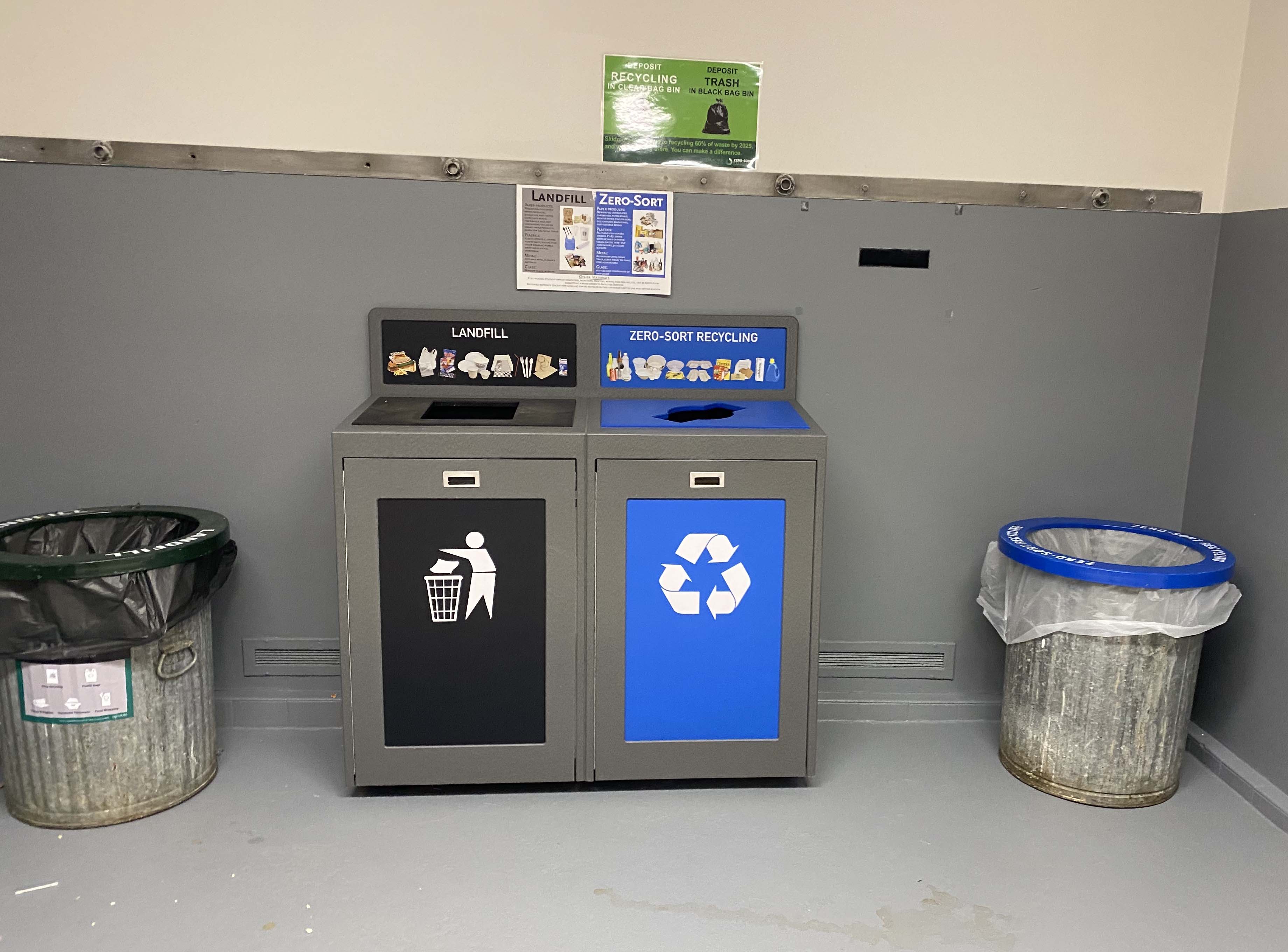
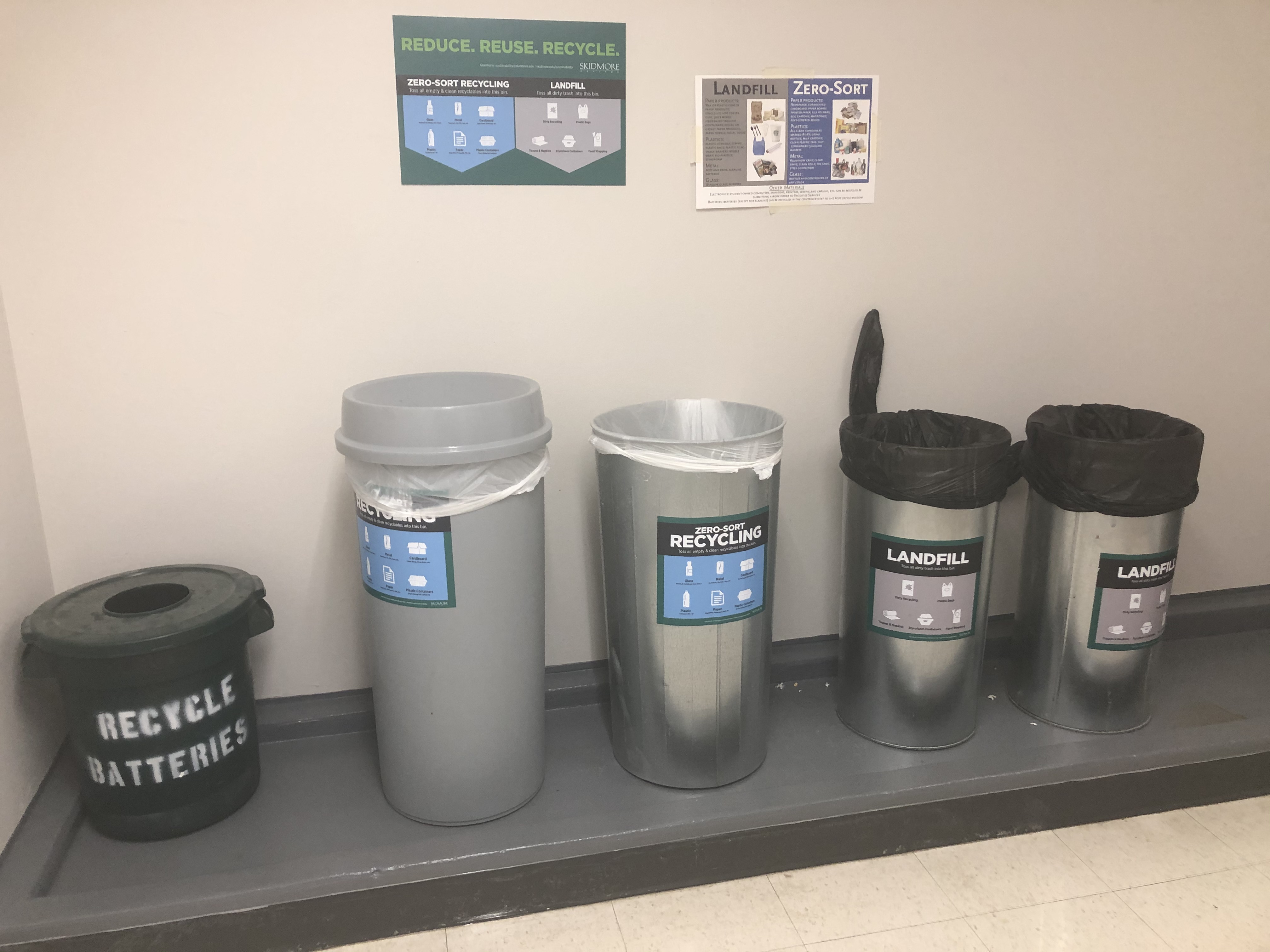
Tips for On-Campus Apartments
- All apartments have communal externally located dumpsters- one for zero-sort recycling and one for landfill, located in the parking lots.
- All apartments have compost bins given to them by our Skidmore Compost Managers! Check here to see how to compost at Skidmore.
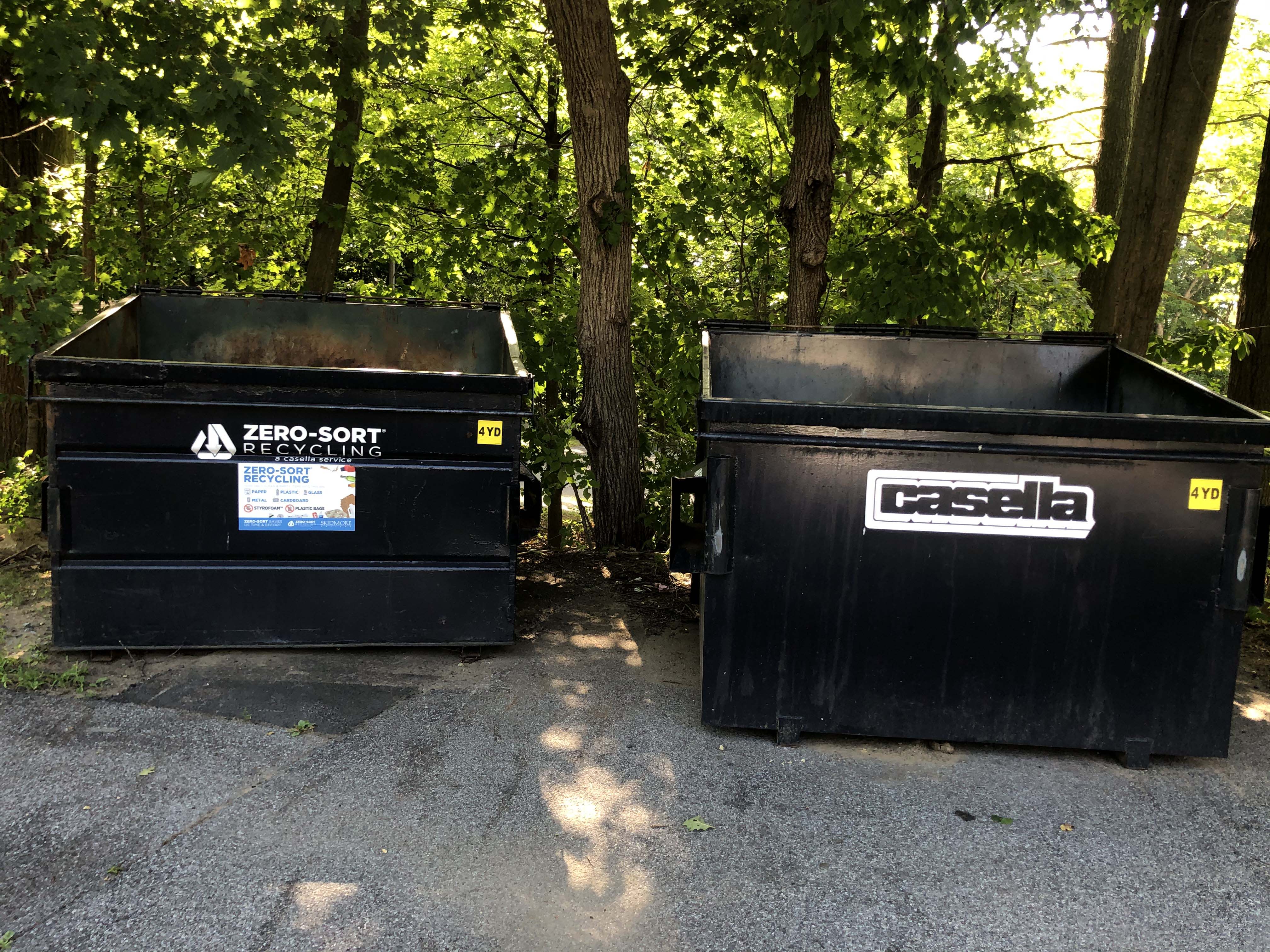
Tips for Living Off-Campus
- Either your landlord will provide recycling or you will deposit it yourself at a recycling center. Get the scoop with these Recycling Guidelines for Saratoga County.
- You can collect and drop off compost!
-
- You can drop off your compost to our on-campus compost system located at the bottom of the North Woods Parking Lot, managed by our student Compost Manager Team. Visit our Compost webpage for more information.
- The Saratoga Farmers’ Market collects compost on Saturdays
- You can drop off compost at Pitney Meadows Farm! Info here
-
Sustainable Saratoga is a local non-profit organization "that promotes sustainable practices and the protection of natural resources through education, advocacy, and action." Their website has a bunch of cool resources and articles, and you can volunteer to help out. In October, they host Saratoga Recycles Day, where they recycle and responsibly dispose of everything and anything from paint and bikes, to clothes and homegoods.
